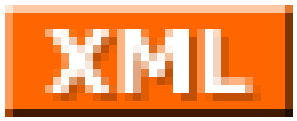Beginners Guides: RSS Feed Setup & Subscriptions
As the
internet advances, even surfing has become slow and laborious. Enter RSS Feeds,
and the simplified way in which they allow us to keep a birds eye view on
favourite websites content. - Version
1.0.0
The Internet is most often characterized as a web of
information, but in some senses it can be thought of as a restless ocean, full
of waves representing various trends. Some roll under the surface without trace
and some sweep onwards, building up mass and momentum until they flood from the
realm of the web savvy into the consciousness of the 'average' user, possibly
drawing them deeper into what the Internet has to offer below the surface.
E-mail and instant messaging are two obvious examples of these crossovers, but
there are many more, including recent developments like
blogging
and the technology we are going to
concern ourselves with today, RSS feeds.
It's actually rather difficult to take any sort of broad view of new Internet
technologies and trends without resorting to grand metaphors like the one
above. The Internet is so vast with so many new technologies and items on
offer that it's often difficult to stop and focus on what's important to
you. For this reason, we appreciate tools that can help to streamline the
Internet experience without causing us to lose touch with our many, many
favourite sites. The RSS feed is one such tool.
In this guide, PCSTATS will be looking at what RSS feeds are, how they work and what
they offer to the average user and site administrator. We'll also create a
basic RSS feed to illustrate just how easy it is to use this web-syndication
tool for your own needs. Let's start by looking at what the acronym stands
for.
 What is RSS?
What is RSS?
Depending on whom you ask, the acronym 'RSS' could stand for one of several
things: Rich Site Summary, Really Simple Syndication, RDF Site Summary,
etc. Let's condense these into a meaning. RSS is an XML-based
protocol which among other things, offers Simple but Rich website Summaries and
Syndication.
RSS feeds are the most common use for this protocol, and they allow websites
to publish summaries of their content in a form that is easy for users to
browse.
The above just scratches the surface of what RSS is and
can do; for example RSS also forms the basis of the software used to create many
online 'blogs' or weblogs.
What does RSS Offer?
For the average web surfer, RSS provides a way to see at a glance if your favourite web sites
have updated their content. Using a simple RSS feed reading program,
you can subscribe to the feeds from any supporting site to get this information
and link directly to the new articles that interest you.
This RSS reading software, also called an RSS feed aggregator, collects RSS
files from websites with RSS feeds that you have subscribed to. It then
displays this information in a single interface, allowing you to browse in a
minute what would have taken you half an hour or more of surfing to
accomplish. All new content is displayed in links, generally with helpful
comments attached, allowing you to pick and choose your destinations for the day
rather than clicking to a succession of your favourite bookmarks looking for
updates.

